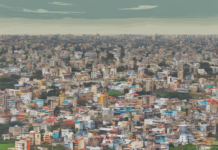On social media and news outlets, a disturbing viral video has been circulating, capturing the attention and concern of many worldwide. The video originates from Manipur, a state in northeastern India, and depicts a troubling and distressing scene that has sparked outrage and calls for action.
The Video
The video shows a group of individuals violently torturing and beating a young man, who is seen pleading for mercy and begging for his life. The perpetrators in the video are seen mercilessly inflicting pain and harm on the helpless victim, whose cries and screams echo in the background. The graphic and harrowing nature of the video has shocked viewers and prompted a wave of condemnation and demands for justice.
Social Media Backlash
As the video gained traction on social media platforms, netizens expressed their horror and disgust at the inhumane treatment showcased in the footage. The incident has sparked outrage and raised questions about the prevalence of such brutal acts in society. Calls for swift and stringent action against the perpetrators have been resounding, with many demanding accountability and punishment for those involved in the heinous act.
Impact on Society
The circulation of such a distressing video has not only incited anger and revulsion but has also shed light on larger issues of violence, justice, and accountability. The incident depicted in the video serves as a stark reminder of the brutal realities faced by many individuals, especially vulnerable populations who may be at risk of such atrocities. It underscores the urgent need for societal introspection and action to prevent such grave violations from recurring.
Addressing the Root Causes
To combat the underlying issues that enable such acts of violence to occur, it is imperative to delve into the root causes and systemic factors that perpetuate such behavior. Poverty, lack of education, societal norms, and a culture of impunity can all contribute to a climate where violence thrives unchecked. Addressing these core issues requires a multi-faceted approach that involves education, advocacy, policy reform, and community engagement to foster a culture of respect, empathy, and non-violence.
Seeking Justice
In the wake of this viral video, there have been calls for swift and fair justice for the victim and accountability for the perpetrators. It is essential for law enforcement agencies and judicial bodies to conduct a thorough investigation into the incident, identify the individuals responsible, and ensure that they are brought to justice. Additionally, support and rehabilitation services should be provided to the victim to aid in their physical and emotional recovery from the trauma inflicted upon them.
Community Response
The circulation of this video has also mobilized communities and organizations to take a stand against violence and injustice. Calls for unity, solidarity, and collective action have emerged, with many advocating for vigilance and proactive measures to safeguard vulnerable individuals and prevent future acts of brutality. Community-driven initiatives, awareness campaigns, and support networks play a crucial role in fostering a safe and compassionate environment for all members of society.
The Way Forward
As we grapple with the aftermath of this disturbing viral video, it is crucial for us to reflect on our collective responsibility to uphold human rights, dignity, and justice. By advocating for systemic reforms, supporting victims, and holding perpetrators accountable, we can work towards creating a society where violence has no place and where every individual is treated with respect and compassion. Our actions today will shape the world we leave for future generations, and it is imperative that we strive to build a more equitable, humane, and peaceful world for all.
Frequently Asked Questions (FAQs)
Q: What actions can individuals take to support victims of violence?
A: Individuals can support victims by offering emotional support, connecting them with resources, advocating for their rights, and promoting a culture of empathy and understanding.
Q: How can communities prevent acts of violence like the one depicted in the viral video?
A: Communities can prevent violence by fostering a culture of respect, addressing underlying social issues, promoting education and awareness, and providing support services for individuals at risk.
Q: What role does the media play in shaping public perceptions of violence and justice?
A: The media plays a crucial role in raising awareness, shaping public discourse, and holding both perpetrators and authorities accountable for acts of violence and injustice.
Q: How can individuals contribute to creating a safer and more compassionate society?
A: Individuals can contribute by speaking out against violence, supporting grassroots initiatives, advocating for policy changes, and promoting inclusivity and tolerance in their communities.
Q: What are the long-term effects of exposure to violent content, such as the viral video from Manipur?
A: Exposure to violent content can have lasting psychological impacts, including trauma, desensitization, and heightened fear or anxiety. It is essential to prioritize mental health and well-being in the aftermath of such incidents.
In conclusion, the viral video from Manipur serves as a stark reminder of the urgent need to address issues of violence, justice, and accountability in society. By standing together, advocating for change, and working towards a more equitable and compassionate world, we can make a difference in the lives of those affected by such atrocities and strive towards a future free from violence and injustice.








